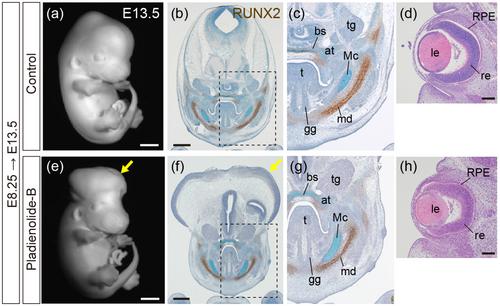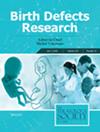Pharmacological Inhibition of the Spliceosome SF3b Complex by Pladienolide-B Elicits Craniofacial Developmental Defects in Mouse and Zebrafish
Abstract
Background
Mutations in genes encoding spliceosome components result in craniofacial structural defects in humans, referred to as spliceosomopathies. The SF3b complex is a crucial unit of the spliceosome, but model organisms generated through genetic modification of the complex do not perfectly mimic the phenotype of spliceosomopathies. Since the phenotypes are suggested to be determined by the extent of spliceosome dysfunction, an alternative experimental system that can seamlessly control SF3b function is needed.
Methods
To establish another experimental system for model organisms elucidating relationship between spliceosome function and human diseases, we administered Pladienolide-B (PB), a SF3b complex inhibitor, to mouse and zebrafish embryos and assessed resulting phenotypes.
Results
PB-treated mouse embryos exhibited neural tube defect and exencephaly, accompanied by apoptosis and reduced cell proliferation in the neural tube, but normal structure in the midface and jaw. PB administration to heterozygous knockout mice of Sf3b4, a gene coding for a SF3b component, influenced the formation of cranial neural crest cells (CNCCs). Despite challenges in continuous PB administration and a high death rate in mice, PB was stably administered to zebrafish embryos, resulting in prolonged survival. Brain, cranial nerve, retina, midface, and jaw development were affected, mimicking spliceosomopathy phenotypes. Additionally, alterations in cell proliferation, cell death, and migration of CNCCs were detected.
Conclusions
We demonstrated that zebrafish treated with PB exhibited phenotypes similar to those observed in human spliceosomopathies. This experimental system may serve as a valuable research tool for understanding spliceosome function and human diseases.


 求助内容:
求助内容: 应助结果提醒方式:
应助结果提醒方式:


